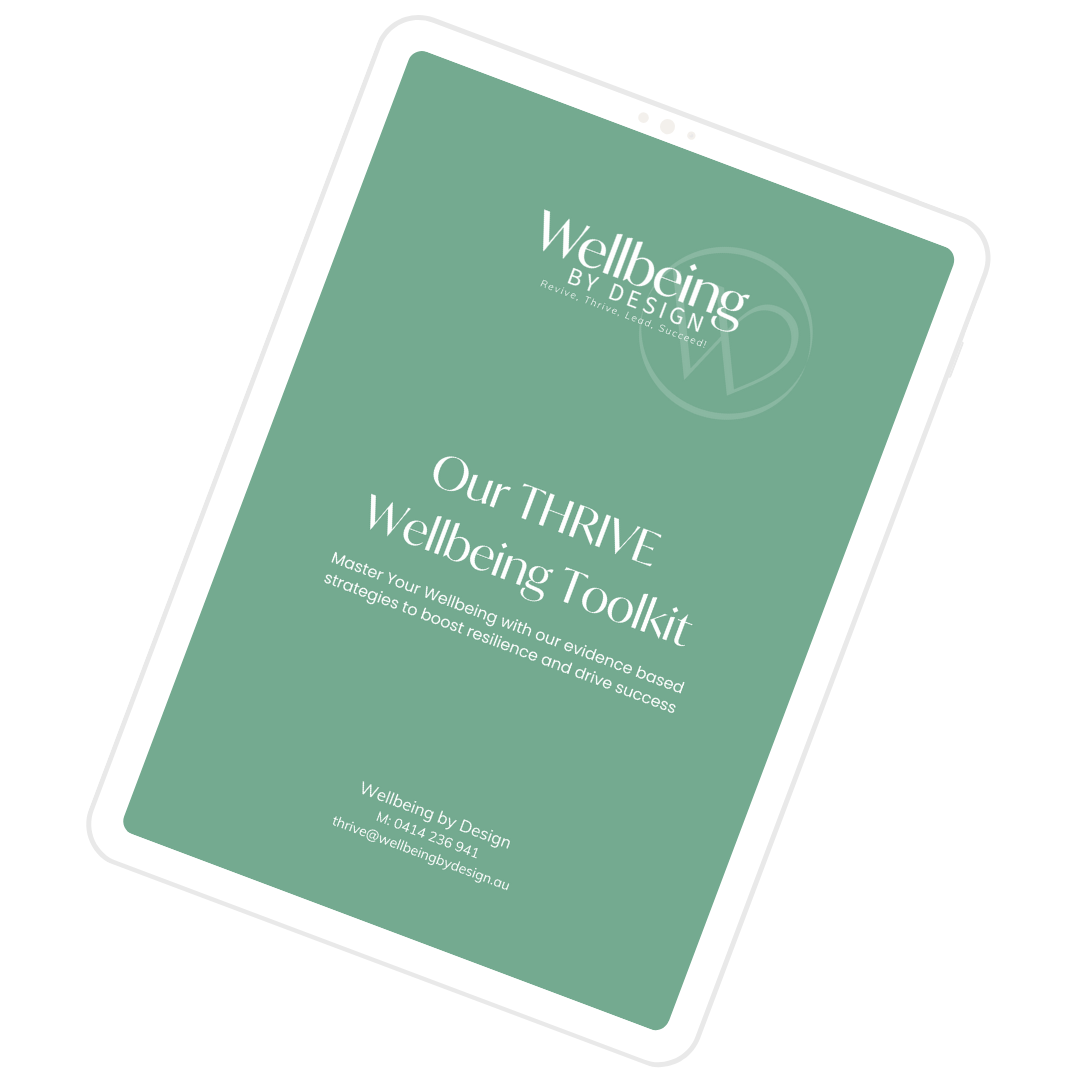In a landscape marked by rapid change, hybrid work, and a rising tide of stress-related claims, workplace wellness Australia is no longer a perk, it’s a priority. For Australian leaders and midlife professionals, the question isn’t “Should we do something?” It’s “How can we afford not to?”
When wellbeing becomes embedded — not bolted on — it transforms the way we live, work, and lead. It delivers measurable returns: in morale, retention, performance, and culture.
Why Workplace Wellbeing Can’t Wait
Burnout, role overload, and psychological distress are no longer isolated incidents — they’re structural risks.
According to the Australian HR Institute, mental health-related claims now make up over 33% of workers compensation claims. Safe Work Australia reports that these claims are growing faster than any other, with an average cost of over $25,000 per incident.¹
But there’s a deeper cost. When your people are surviving instead of thriving, the ripple effects touch every corner of your organisation: engagement drops, innovation stalls, conflict rises, and leaders lose their edge.
Rethinking Success: From Survival Mode to Sustainable Momentum

At midlife — often the busiest, most responsibility-heavy chapter — many professionals find themselves stretched thin. Add leadership pressure to the mix, and it’s easy to fall into reactive habits: constantly putting out fires, neglecting self-care, and feeling disconnected from the impact you once loved making.
But success doesn’t have to mean self-sacrifice.
Workplace wellbeing is about building inner and organisational capacity — so that people can lead with clarity, not exhaustion.
Imagine your team like a nervous system: when it’s overloaded, performance suffers. But when it’s supported, it becomes adaptive, responsive, and sustainable.
The Hidden Costs of Doing Nothing

Not prioritising workplace wellness doesn’t mean “status quo.” It means slowly eroding:
- Productivity — when focus, energy, and morale are low
- Retention — when employees seek cultures that actually care
- Trust — when values don’t match lived experience
- Reputation — when high performers burn out or walk out
Most importantly, it means missed opportunity — to create a thriving, purpose-driven workplace where people show up energised and engaged.
A Strategic Approach to Workplace Wellness Australia

Here’s the truth: You don’t need bean bags or kombucha to lead a wellbeing strategy.
You need clarity, structure, and co-created solutions that align with your people and your priorities. That’s where the Wellbeing by Design™ approach begins — helping you embed wellbeing into every level of how you operate, not just how you market.
Let’s walk through five key steps:
Step 1: Understand Your Current State
Theme: Self
Start with a wellbeing audit — not assumptions. This could include:
- Anonymous staff surveys on energy, engagement, and workload
- Data from HR (e.g. absenteeism, turnover, EAP usage)
- Listening circles or co-design workshops
Ask:
- What’s energising our people — and what’s quietly draining them?
- Where is pressure building, and what support systems exist?
Step 2: Co-Design Practical Workplace Wellness Programs and Solutions
Theme: Structure
Wellbeing can’t be “delivered” to people — it needs to be built with them.
Invite diverse voices to the table: frontline staff, emerging leaders, HR, executive sponsors. Use co-design to map real needs, identify gaps, and prioritise low-effort, high-impact initiatives.
Examples:
- Clearer workload boundaries
- Microbreaks or recharge rituals
- Team norms that promote respectful communication
- Menopause-aware policies and education
Step 3: Build Mental Fitness and Team Resilience
Theme: Resilience
Mental fitness is your capacity to respond rather than react. It’s the difference between spiralling in stress and stepping into clarity.
Backed by research from Stanford’s Positive Intelligence® framework, building mental fitness:
- Strengthens self-command
- Reduces time spent in unhelpful thought patterns (like self-doubt, people-pleasing or hyper-control)
- Improves adaptability, empathy, and creativity²
In practice, this might look like:
- Mental fitness training for teams
- Reflective check-ins
- Coaching for high-potential staff navigating pressure or imposter syndrome
Step 4: Train Leaders to Support, Not Just Perform
Theme: Leadership
Your leaders set the tone — consciously or not.
Yet many were promoted for performance, not people skills. Without support, even the best intentions can fall short.
Leadership development should include:
- Psychological safety and inclusive leadership
- Coaching conversations, not command-control
- Mental fitness tools to handle conflict, feedback, and complexity
- Support navigating midlife challenges (e.g. caring for aging parents, burnout, hormonal shifts)
Step 5: Embed, Iterate, and Measure Impact
Theme: Impact
Sustainable wellbeing isn’t a project — it’s a mindset.
Create space to measure what matters:
- Pulse check surveys
- Culture audits
- Leadership 360s
- Shared success stories
And most importantly — celebrate progress, not perfection.
A Real-World Example: Shifting from Pressure to Performance
Composite Case Study: Midlife Momentum in a Community Org
A mid-sized community organisation in Adelaide partnered with Wellbeing by Design after a sharp rise in burnout and turnover.
Following a short audit and listening series, they:
- Introduced mental fitness and coaching support for all team leaders
- Piloted flexible work policies based on SMART Work Design³
- Ran monthly “pulse pauses” — 30-minute reflective sessions across teams
Outcomes in 6 months:
- 33% drop in reported stress levels
- Re-engaged senior leaders (one called it “career-saving”)
- A renewed sense of trust and direction
Questions to Spark Momentum
Ask yourself (or your leadership team):
- Where is our workplace culture helping people thrive — and where is it quietly exhausting them?
- If wellbeing were a leadership capability, how would we develop it?
- What small action could we take this month to move from intention to impact?
Your Next Step
Whether you’re an executive navigating complexity or a leader wanting to model something better, you don’t have to figure it out alone.
At Wellbeing by Design, we help individuals and organisations put wellbeing at the heart of how they live, work, and lead — through coaching, education, and co-designed support.
👉 Book a strategic consultation
👉 Download our free wellbeing audit checklist
Let’s build something better — together.
References
- Safe Work Australia. (2023). Work-related psychological health and safety: A systematic approach to meeting your duties.
- Australian HR Institute (AHRI). (2023). Workplace Mental Health Report. (2022).
- Mental Health and Employers: Refreshing the Case for Investment. Deloitte Insights.
- Chamine, S. (2012). Positive Intelligence: Why Only 20% of Teams and Individuals Achieve Their True Potential and How You Can Achieve Yours. Greenleaf Book Group Press.
- Curtin University Future of Work Institute. (2023). SMART Work Design Principles.
- Harvard Business Review. (2021–2023). The Midlife Unraveling; How Women Can Thrive in Midlife.
- Porges, S. W. (2011). The Polyvagal Theory: Neurophysiological Foundations of Emotions, Attachment, Communication, and Self-regulation. W. Norton & Company.







